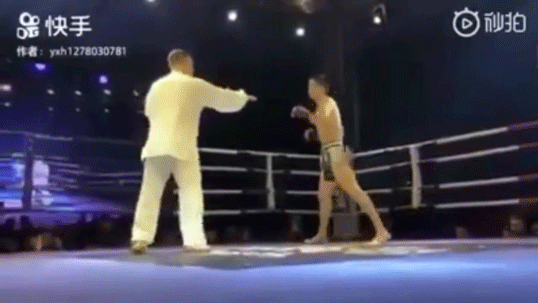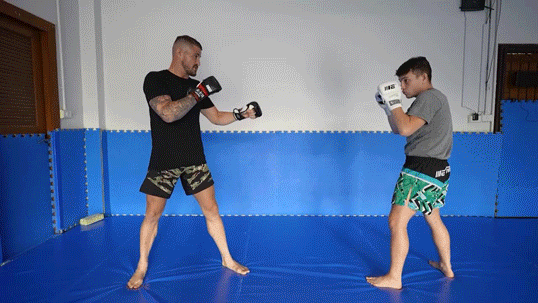A previous comment I made on that 7 second fight:
It appears because they lack the understanding and skill to control/setup (double weight) their opponent
before making contact. At 2:50 of "Neijiaquan vs Western Fighting," this guy appears to misunderstand by stating, "In modern boxing, the
opponent fights back at anytime." Also this tai chi guy
at 1:02 says, "Two people
touch hands then, change and push to take opponent's balance."
Rather, MMA uses "
CMA" concepts and strategies
similar to
Zhang Yun (tai chi) and
Guo Shilei (bagua).
MMAist 1. Circles opponent (na) to lead him to step (I call pull/push footwork). 2. feint jab to lure (yin) forward energy 3. listen (ting) for opponent to double weight 4.
change before opponent's front foot lands (hua) 5. issue (fa):
Same sequence in
cooperative drills/demos starting from distance:
Zhang Weili, among other top fighters, currently trains at Bang Tao gym. Owner covers entering strategy from "MMA distance" to finish (e.g., takedown. push, etc.).
“Start at MMA distance where the opponent has to bridge…. In this modern day and age if I just go to shoot a double leg, he’s going to see it coming from a mile away…. Controlling the distance knuckle to knuckle is very, very important. Because, he can just counter me. So, I need to feint or fake (yin) to make my opponent put his hands up….The opponent may just step back. So, I need to shuffle step to bridge the distance....”
Starting
at :50, ...


